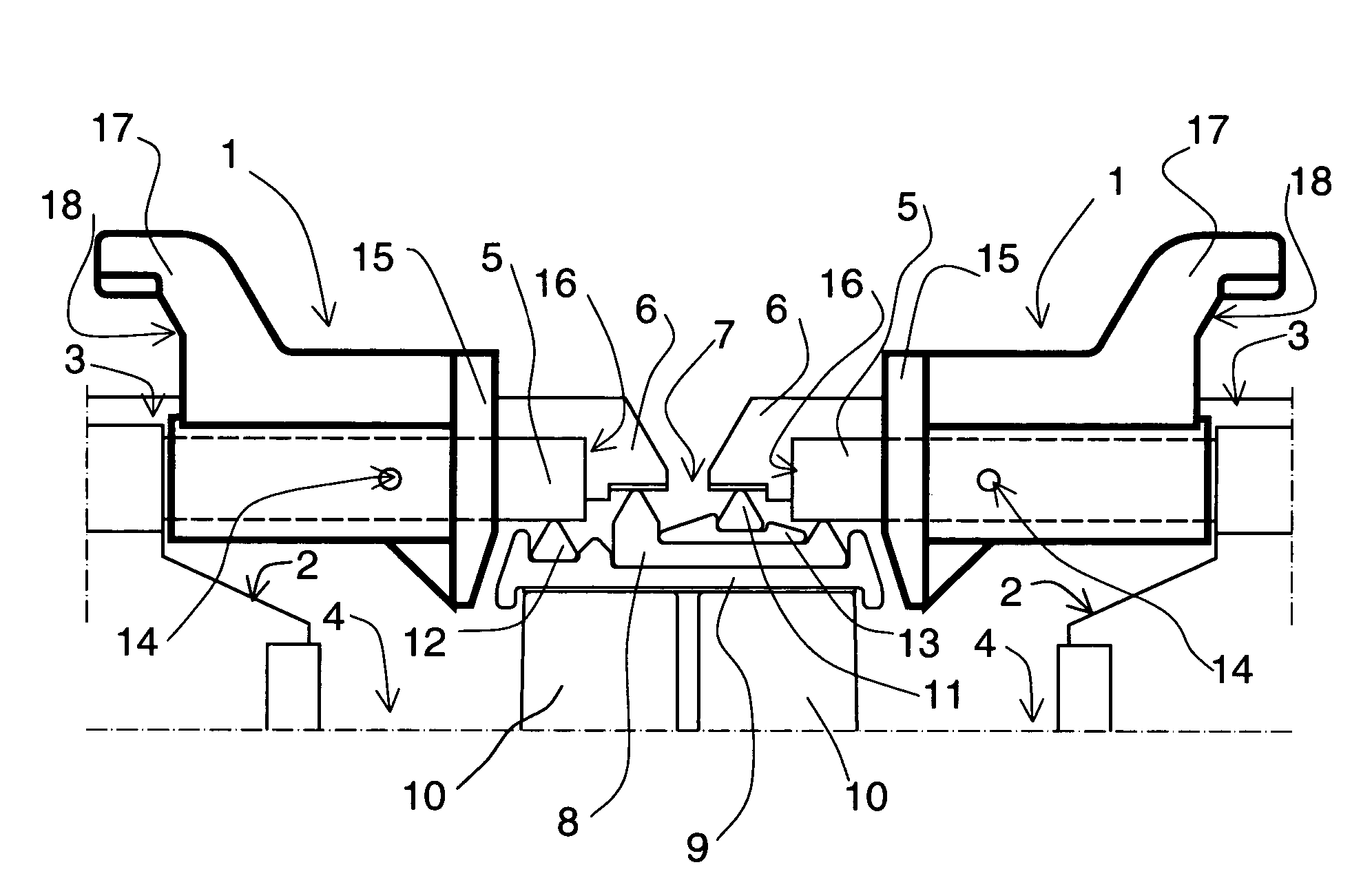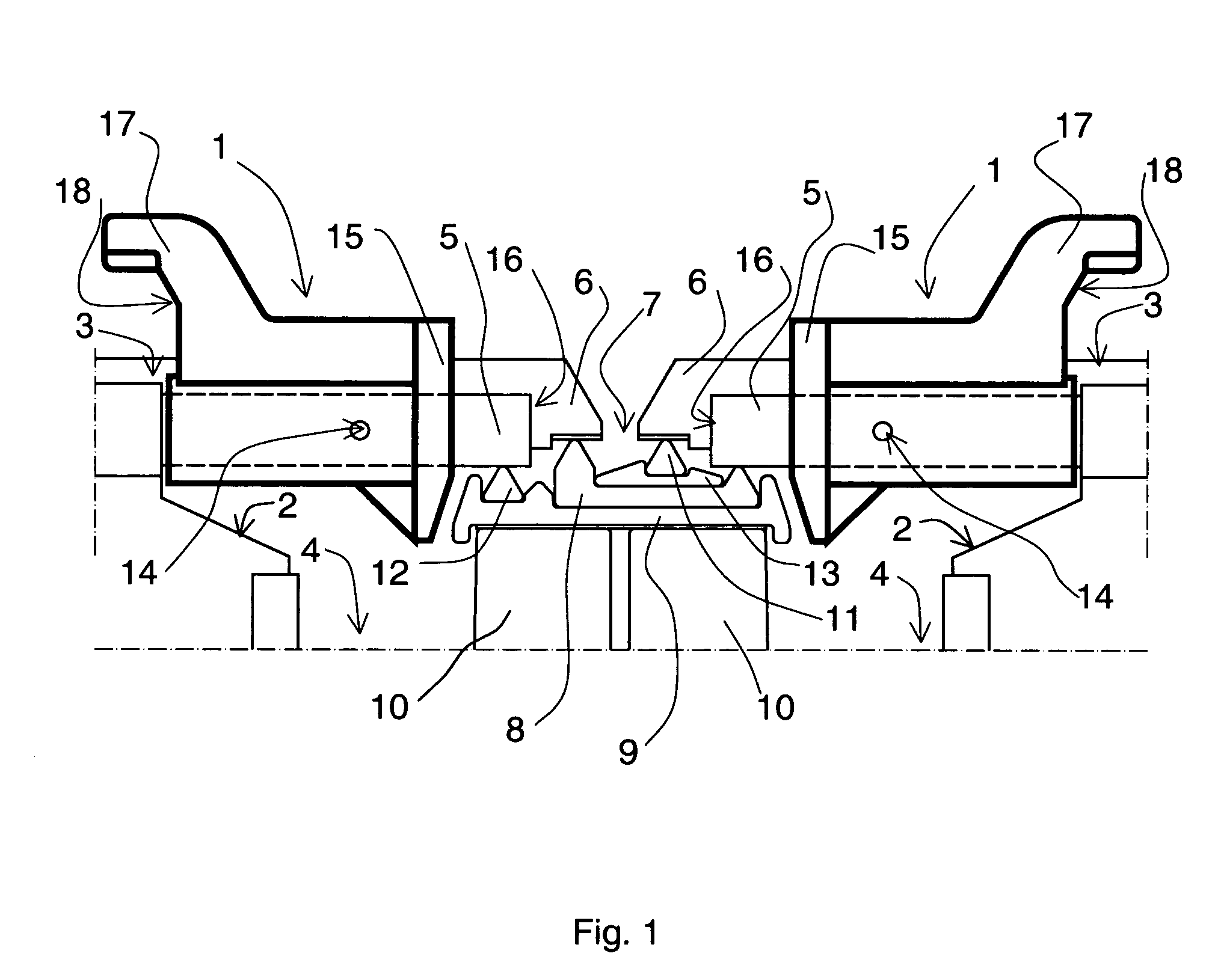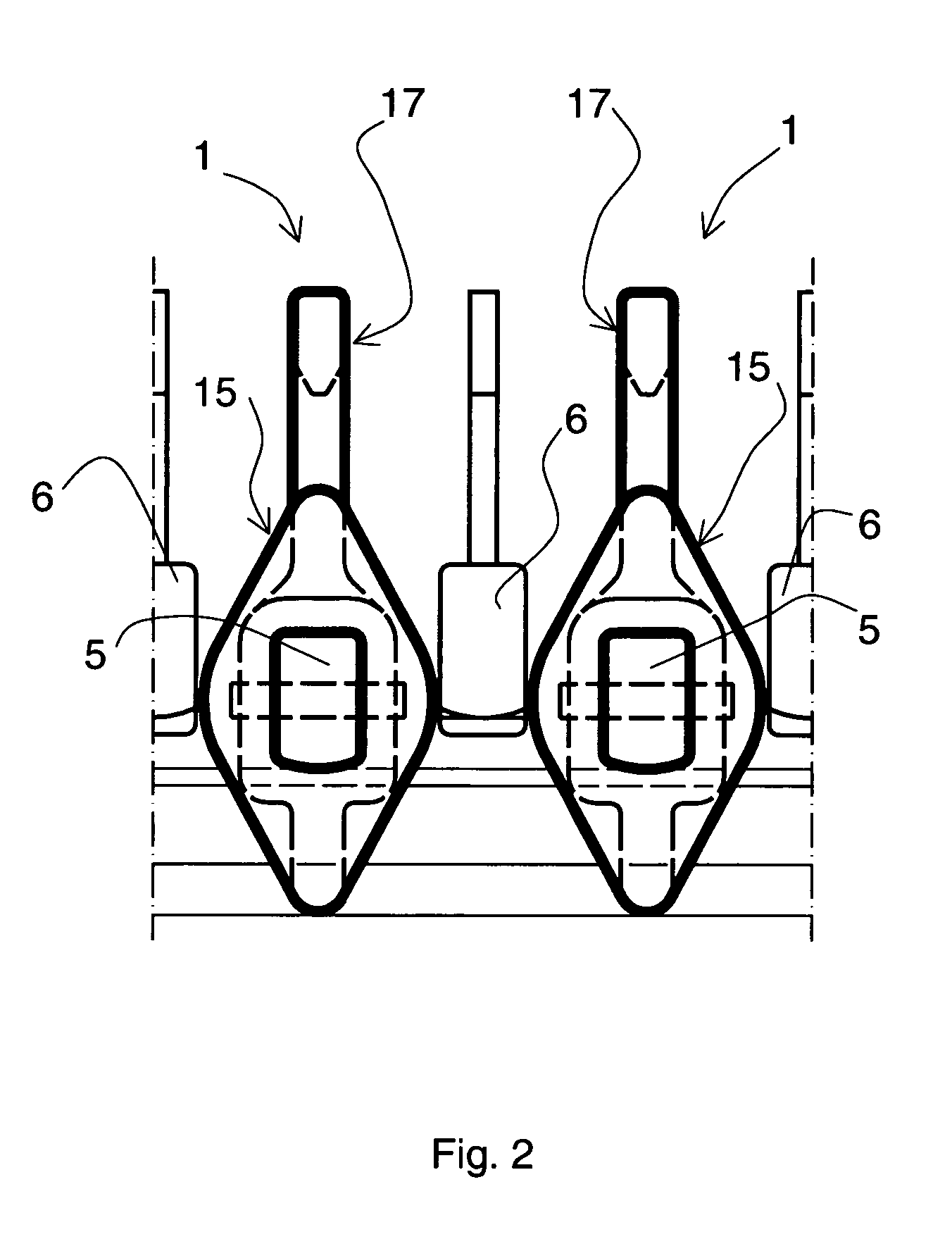Transfer and insulation device for electrolysis
a technology of transfer and insulation, applied in the direction of manufacturing tools, electrical-based machining electrodes, machining electrodes, etc., can solve the problems of notched conductor rails, high manufacturing costs, and damage to tanks, and achieve the effects of convenient attachment, convenient gripping, and advantageous lifting and lowering
- Summary
- Abstract
- Description
- Claims
- Application Information
AI Technical Summary
Benefits of technology
Problems solved by technology
Method used
Image
Examples
Embodiment Construction
[0018]According to FIG. 1, the anodes 2 and cathodes 3 are lowered into electrolytic tanks 4, of which only two adjacent tanks are illustrated. In reality, an electrolytic process includes a large number of adjacent tanks, where similar structures are repeated. According to the drawing, the anodes 2 and cathodes 3 are placed in the tank 4 in succession, in an alternating order, in the lengthwise direction of the tank. The drawing shows first an anode at the front, and behind the anode, a cathode that is located further up. Both the anodes and the cathodes are suspended, by means of their suspension rods 5 and 6, in conductor rail structures 7 placed on top of the walls 10 of the electrolytic tank 4. The conductor rail structure comprises a conductor rail 8 extending over the whole length of the tank in order to electrically connect the anode and the cathode of adjacent tanks, and an insulation sheet 9 of the same length as the tank, placed between the conductor rail and the wall 10....
PUM
| Property | Measurement | Unit |
|---|---|---|
| electroconductive | aaaaa | aaaaa |
| current | aaaaa | aaaaa |
| movements | aaaaa | aaaaa |
Abstract
Description
Claims
Application Information
 Login to View More
Login to View More - R&D
- Intellectual Property
- Life Sciences
- Materials
- Tech Scout
- Unparalleled Data Quality
- Higher Quality Content
- 60% Fewer Hallucinations
Browse by: Latest US Patents, China's latest patents, Technical Efficacy Thesaurus, Application Domain, Technology Topic, Popular Technical Reports.
© 2025 PatSnap. All rights reserved.Legal|Privacy policy|Modern Slavery Act Transparency Statement|Sitemap|About US| Contact US: help@patsnap.com



